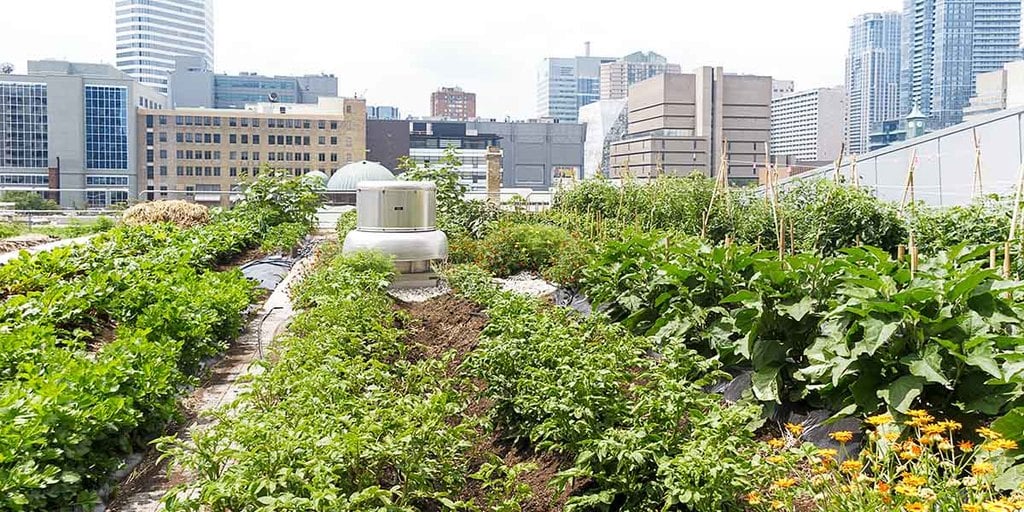The Ultimate Guide To City Blooming
Table of Contents9 Easy Facts About City Blooming ShownAbout City BloomingSome Known Questions About City Blooming.Everything about City BloomingGetting The City Blooming To Work
Fascinated in growing food for sale in the City of Chicago? Below is a checklist of frequently asked questions pertaining to the regulations and policies that farmers should consider when intending an urban agriculture job.
The zoning modification does not customize any various other codes managing composting, building licenses, acquiring or leasing City possessed residential property, company licenses or environmental contamination. There are existing codes that regulate these problems and they continue to be completely effect and may be applicable to your job. Area gardens are generally owned or handled by public entities, civic companies or community-based companies and maintained by volunteers.
Urban farms grow food that is meant to be offered, either on a not-for-profit or for-profit basis. Due to their industrial function, metropolitan farms require an organization certificate. Yes. An area yard is permitted to market surplus produce that was grown on site if the sales are accessory or secondary to the yard's primary function explained over.
Fascination About City Blooming
Composting is permitted but only for plant material that is produced and used on site. The quantity of garden compost material can not go beyond 25 cubic lawns at any type of given time according to the criteria in 7-28-715 of the City's Municipal Code. Yes. Due to the fact that the soil at many brand-new yard sites requires modifying, garden compost, soil, wood chips, or other materials can be gotten to build or boost the expanding space - eco-friendly practices.

If a structure permit is needed after that the hoophouse will be considered an accessory building. You can figure out even more about the structure permit needs by getting in touch with the Division of Buildings. The 25,000-square-foot size restriction is intended to stop a single area garden from controling a given block or diminishing the block's existing property or business character.
The limit does not put on gardens found in Public Open Space (POS) districts. Can there be greater than one neighborhood garden that is 25,000 square feet on a solitary block? Yes. The dimension limit uses to specific gardens, not to private blocks. No. Fence is not called for, nevertheless, gardens that have big parking lot might be called for to set up fencing or various other landscape design features.
8 Simple Techniques For City Blooming
B1 & B2 districts need that all commercial use tasks be conducted inside your home. Is fence required for metropolitan farms? Fences may be called for, along with landscape design and screening, for certain parking locations and my explanation exterior job or storage locations depending on place and the specific task taking location.
Urban ranches call for structure licenses and zoning authorizations prior to building (City gardening). Various other kinds of city evaluation may be needed depending on specific frameworks, tasks, dimension, landscape design, licensing, public health and stormwater monitoring issues.
The Department of Company Affairs and Customer Protection can help determine the certain kind of organization license that's needed. Off street vehicle parking is needed for most industrial jobs in Chicago. The called for number of car parking rooms is based on the number of employees functioning on site and not the square footage of the growing space.
Little Known Facts About City Blooming.

An urban farm can sell compost material generated on site, however, the operation must comply with the policies in 7-28-715 of the Chicago Municipal Code. Aquaponic systems are enabled indoors on urban ranches in lots of zoning districts.
Up to five hives or swarms of honey may be kept as an accessory use. Beekeepers need to register with the Illinois Department of Agriculture. To learn more about the suggested zoning amendment you may speak to the Department of Real Estate and Economic Growth, Bureau of Planning and Zoning at 312.744.8563.
Farming in cities and metropolitan locations A city farm in Chicago. Urban agriculture describes numerous methods of cultivating. https://city-blooming.webflow.io/, processing, and distributing food in urban locations. The term also applies to the area activities of animal husbandry, aquaculture, beekeeping, and gardening in a metropolitan context. Urban farming is identified from peri-urban agriculture, which occurs in backwoods at the edge of suburbs.
Excitement About City Blooming
It can involve an activity of natural growers, "foodies" and "locavores", that seek to develop social media networks founded on a common ethos of nature and area holism. These networks can establish using formal institutional support, ending up being incorporated into neighborhood town planning as a "change town" movement for lasting urban advancement.
In either instance, the more straight accessibility to fresh vegetable, fruit, and meat products that might be know with urban farming can enhance food safety and security and food safety and security while decreasing food miles, resulting in lower greenhouse gas discharges, therefore adding to climate change reduction. Several of the first evidence of urban agriculture originates from Mesopotamia.